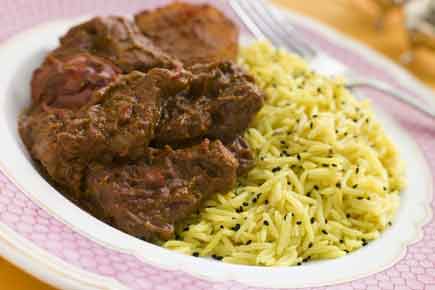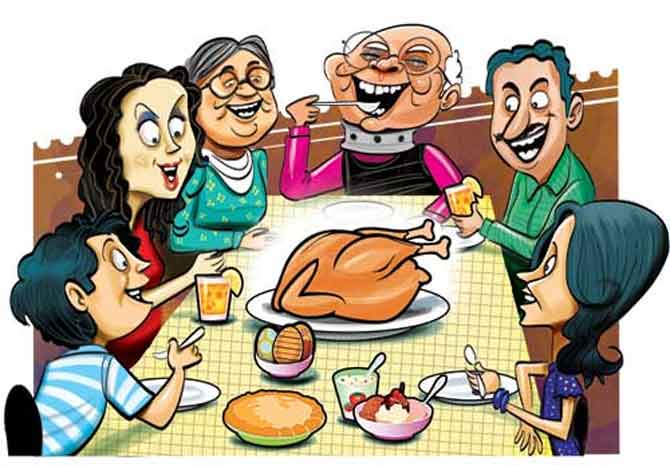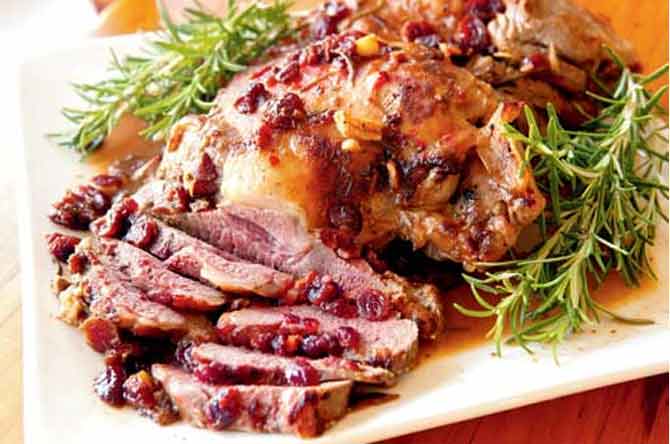From mid-day archives: If you thought Easter food meant only Easter eggs, then think again. Here's a sneak peek into typical Goan, East Indian and Anglo-Indian homes where a traditional Easter feast means laughter, love and bonhomie around the table, along with family and friends

 Illustration/Amit Bandre
Illustration/Amit Bandre
Goans
A Peri Peri good Easter
Goans are very pious about the Lent. Many give up indulgences in various ways. I am happy that like with Christmas, the Easter services are treated with piety and reverence rather than the focus on being the frills of festivity. Much of the lead up to Easter is a time for reflection on the passion of Christ and self-examination. On Easter day, there is reason to celebrate the end of the Lenten period.
ADVERTISEMENT
Wendell Rodricks, fashion designer
East Indians
Stuffed over the Vindaloo
At Easter, the entire family has a meal together as this is a culmination of the 40 days of abstinence and celebrates the resurrection of Jesus Christ. Food plays a very important role at Easter as everyone looks forward to the Easter dinner. The menu for dinner is purely made of East Indian cuisine with specialties like Chicken Stuff Roast, Pork Vindaloo and Mutton Stew.

Roast Lamb preparation with Rosemary
The masalas used and the method of cooking is different giving it a very distinct flavour. Both items are usually served with East Indian deep-fried breads - aryas and Fugias, both are slightly sweet, fermented and spongy. While Fugias are of the round-shaped variety; Varyas are shaped like donuts. The family also comes together at noontime for a prayer and blessing of their home with Holy Water. Besides the food, the children at home especially look forward to Easter eggs. We also share Easter eggs with children of our relatives. So, it's always like a family affair.
Gleason Barreto, Co-ordinator, Mobai Gaothan Project
Anglo-Indians
Pencil Skirts for Duck Gravy
We have a tradition of making Easter eggs out of marzipan and chocolate. I grew up in a joint family in Byculla watching my grandmother making it at home - we never bought it from outside. We would also create decorations for the Easter egg basket, including yellow chicks made using cut strips of straw and old crepe paper. We would also decorate real eggs (they were drained through a small hole of yolk and then we would paint on them), which were then kept on the shelves.
On Easter, there was dancing and games. For lunch, there was Pulav, Kofta Curry, Chicken Curry, Duck Gravy in Orange Sauce, Rice, Vindaloo, Green Chutney, Papad with Chocolate Pudding with Custard Sauce for dessert. The items were a mix of traditional Indian fare and Western dishes, thus offering the best of both cultures.
Sadly, most of these traditions have died out except perhaps in smaller pockets like Jabalpur (Anglo-Indians settled in great numbers around Railway colonies) who keep the tradition alive. Another essential aspect was the crockery and table etiquette. A famous aphorism about the Anglo-Indian community is that they live to eat and not eat to live. So, the focus was on dressing up and enjoying a feast. We would wear new outfits (pencil skirts were in vogue), shoes and hats.
Every family would cook plenty of food and so we always welcomed extra guests who would drop by. Usually, they were Anglo-Indians or Goan Catholics who are interconnected and share similar customs. Back then, Byculla was a hub for Anglo-Indians and everyone knew the rest.
There were no telephones, and people would drop by without any intimation. This year, for the first time, there will be an Anglo-Indian Ball in the evening (6 pm) at the St Peter’s School Basketball Court, Mazagaon; it’s not just for the Anglo-Indians (those with friends in the community can drop in too) especially those who love their Jazz, Waltz and Jive!
Blossom Lilywhite, President, The All-India Anglo-Indian Association (Mumbai Branch)
Around the world
>The roast lamb dinner that is common for Easter Sunday dates to earlier than Easter, to the first Passover of the Jews. The sacrificial lamb was roasted and eaten, with unleavened bread and bitter herbs in hope that the Angel of God would pass over their homes and bring no harm. As Hebrews converted to Christianity, they brought along this tradition. Christians refer to Jesus as The Lamb of God. It’s how traditions merged.
> In the UK, US, Germany, Denmark, Netherlands, Lithuania, Egypt, egg-rolling is a traditional Easter event.
> Greeks and Portuguese eat Round, flat loaves marked with a cross and decorated with Easter eggs. Syrian and Jordanian Christians have
honey pastries.
Compilation: Soma Das, Hassan M Kamal & Ruchika Kher
 Subscribe today by clicking the link and stay updated with the latest news!" Click here!
Subscribe today by clicking the link and stay updated with the latest news!" Click here!







